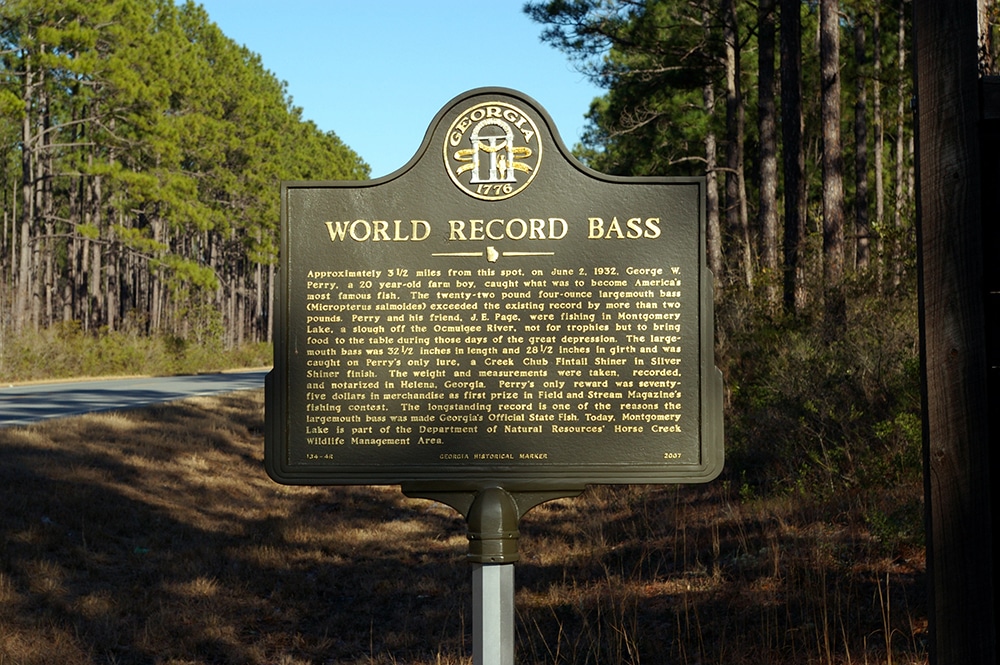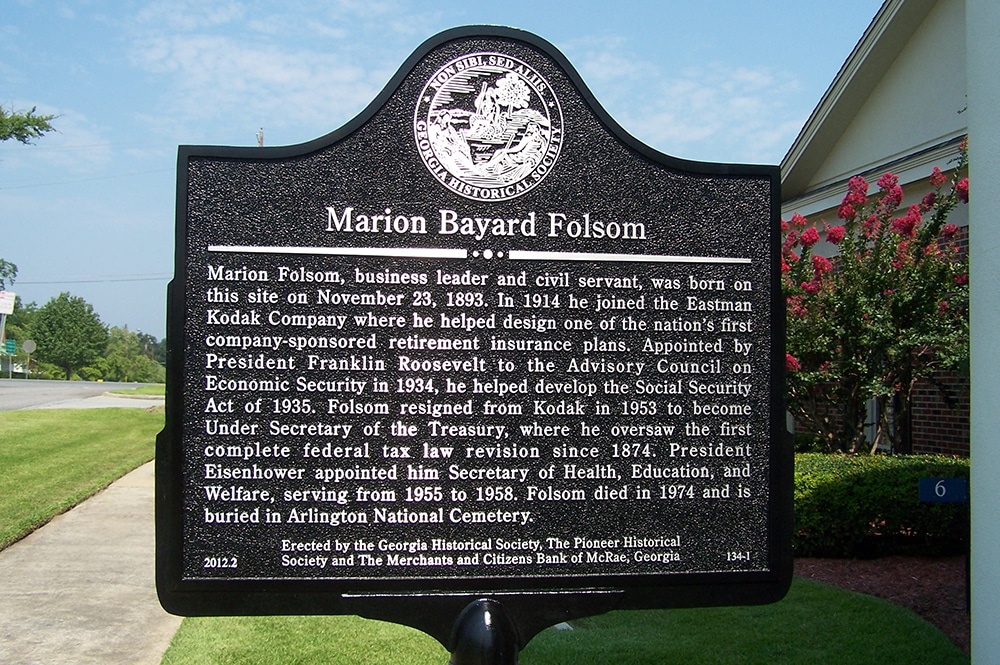Frequently Asked Questions About the Historical Marker Program
The Georgia Historical Marker Program is an outstanding tool for preserving the history of the State of Georgia.
Historical markers serve to educate citizens and visitors alike about the people and events that have shaped our past and present. Below you will find a list of frequently asked questions regarding the historical marker program.
To qualify for a marker, buildings, structures, and sites of special events typically must be at least 50 years old. Markers recognizing events are considered only when the event in question took place at least twenty-five years prior to the date of the application. Nominations devoted to people generally require the subject to have been deceased 25 years or more. School and church structures, along with church congregations, must be at least 50 years old to qualify for a marker (although most successful nominations are significantly older).
Unless the proposed marker subject clearly demonstrates significance beyond the local level, applications for churches and schools will not be approved. No “firsts” will be marked without sufficient documentary evidence to establish authenticity without question. Nominations must be sponsored by at least one entity such as a historical organization, church, school, government, or corporation and may not be sponsored by individuals.
Typically, plaques mounted on historic structures are associated with local, state, or national registry programs like the National Register of Historic Places. These programs are not affiliated with the Georgia Historical Society or the Georgia Historical Marker Program. The Georgia Department of Community Affairs Historic Preservation Division works with applicants on the process for having structures listed on the Georgia and National Register of Historic Places. For more information on the National Register process, please contact Georgia HPD at 404.679.4840 or visit dca.ga.gov/georgia-historic-preservation-division.
Check out the marker glossary for definitions and examples of historical marker and related terminology.
The process for obtaining a historical marker is competitive and requires the submission of application materials that are reviewed by an independent committee that meets once per year. More information on this process can be found by reading the Applying for a New Historical marker section.
The Georgia Historical Society requires all Historical Marker Program historical markers to have a completed application for consideration. Applications may be submitted by an individual, but the application must have the support of at least one sponsoring organization. If you are unsure where to start with identifying a sponsoring organization, applicants are encouraged to reach out to local community groups who may be interested in the subject. To learn more about the responsibilities of sponsoring organizations, please click here.
Sponsors of approved new marker projects contribute toward the cost of casting and delivering the marker, and the Georgia Historical Society bears the remaining financial and administrative costs. In addition, the sponsor accepts responsibility for the maintenance of the marker. If an existing marker must be repaired or replaced, the price will be based on the cost of the repair and/or replacement of the marker at the time the work is necessary. Because prices fluctuate over time, please inquire for the current cost-share figure.
All historical marker applications are due by July 1st and are reviewed by the Marker Review Committee in August. If an application is approved by the committee at the annual fall review meeting, it can take between six and twelve months for the marker to be installed and dedicated.
Due to the number of historical markers under the Georgia Historical Marker Program’s care, GHS does not offer liability coverage for the historical markers. If the sponsoring organization feels that liability coverage is required, coverage may be purchased independently of GHS.


Since 1998, GHS has administered the Georgia Historical Marker Program for the state of Georgia using a silver-on-black plaque design with the Society’s seal at the top (see photo on right). Nearly 300 of these markers exist across the state at this time and these markers are the property of the Georgia Historical Society.
Prior to 1998, the Georgia Historical Marker Program was administered by the Georgia Department of Natural Resources and the Georgia Historical Commission before that. These markers are typically green and have the seal of the state of Georgia at the top (see photo on left). In cooperation with DNR, GHS is now taking the lead on the maintenance and repair of state historical markers put up prior to 1998.
No. A number of local groups throughout Georgia including local governments, civic groups, clubs, and historical societies have erected markers independently. These markers are not maintained by GHS. Generally, the entity responsible for the marker is noted in the marker text or on the marker’s seal. If you have a question about whether or not a specific marker is within the state program, please contact us for more information.
Please complete the form on this page. Once submitted GHS staff will be in touch with a list of markers available for adoption in your area.
If possible, try to determine who erected the marker. This information is usually at the bottom of the marker plaque. To report missing or damaged markers within the statewide program, please use the form found here to let us know about their condition. If you are unsure about whether or not it is a state marker, we will be glad to help identify the marker. Please contact the Marker Coordinator at 912.651.2125 ext. 113 for more information.
But I Still Have Questions!
No problem! For questions about the marker application process or about existing markers, contact the Marker Coordinator at markers@georgiahistory.com or 912.651.2125 ext. 113.
